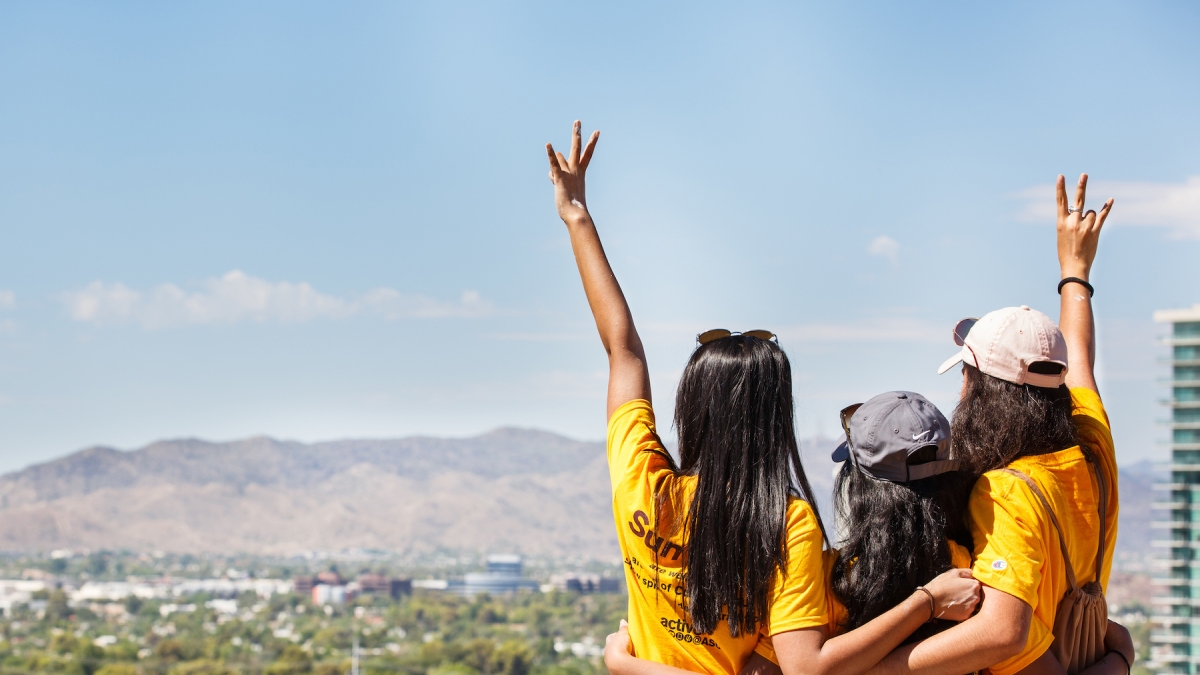For new students, the idea of going to an unfamiliar place can be daunting, and this has only been compounded by the pandemic. ASU has long believed in the power of community to address the potential concerns of settling into a new life in a new place. That’s why Devil2Devil exists: for incoming students to find friends, look for roommates, ask questions and get information about enrollment steps and other processes.
Devil2Devil has existed in one form or another since 2011, and past iterations have looked and felt very much like a social network. Some have needed Facebook authentication in order to join. But in 2019, even before the novel coronavirus exploded onto the global scene, it was clear that a paradigm shift was needed to get students active and engaged. Students no longer used Facebook as frequently as they had in years past.
Casey Thomas, associate director of digital engagement and public relations of admission services and Devil2Devil’s community manager since its inception, said, “We knew students weren’t really looking for another social network, so it was appropriate to move Devil2Devil into a space specific to ASU.” And so in May 2019, Thomas began talking with the University Technology Office about moving Devil2Devil to its new home as part of ASU’s Slack Enterprise Grid.
“Easy login access, a mobile app and customizable channels for conversations made Slack appealing,” said Thomas. And incoming students would now have prior exposure to the platform before using it for collaboration and coursework — a big advantage, considering the advent of Slack as the manifestation of ASU’s digital campus.
Devil2Devil is available to incoming first-year, transfer and master’s degree-level graduate students from about February to September, at which point students can continue collaborating and otherwise interacting with peers on Slack via direct messaging and other channels.
Usage data shows just how successful the move to Slack has been. Devil2Devil’s Slack presence launched Feb. 1, 2020, and it has 11,800 members as of June 9, 2020, with 2,300 active weekly users. Previous iterations of Devil2Devil have never surpassed 8,000 users.
Thomas also attributes some of the new Devil2Devil’s success with the pandemic, as admitted students have sought connection while largely isolated from the outside world. There was a significant jump in activity, for example, during the week of March 16, which for many was the first week of quarantine.
And the pandemic has impacted Devil2Devil programs as well. Just this month, Thomas and her team introduced New Student Orientation Gold Guides to Devil2Devil to host peer-led New2ASU channels with guided activities, content regarding enrollment and academic success and ASU resources. Thomas points to the success of this initiative, which would not have existed without the pandemic.
“The students hosting these channels are usually helping run in-person orientation programs and would not have been available to manage channels. And previous iterations had no effective way to create channels or groups like this,” she said.
Devil2Devil provides an invaluable service to admitted students. For some, it eases the transition of being away from home by introducing others from the same area. For others, it makes finding a roommate easier by letting users glimpse each other’s interests and personalities. However Devil2Devil is used, Thomas adds, “it’s instrumental in helping us build the sense of belonging for our admitted students.”
More Science and technology

ASU professor honored with prestigious award for being a cybersecurity trailblazer
At first, he thought it was a drill.On Sept. 11, 2001, Gail-Joon Ahn sat in a conference room in Fort Meade, Maryland.…

Training stellar students to secure semiconductors
In the wetlands of King’s Bay, Georgia, the sail of a nuclear-powered Trident II Submarine laden with sophisticated computer…

ASU startup Crystal Sonic wins Natcast pitch competition
Crystal Sonic, an Arizona State University startup, won first place and $25,000 at the 2024 Natcast Startup Pitch Competition at…
